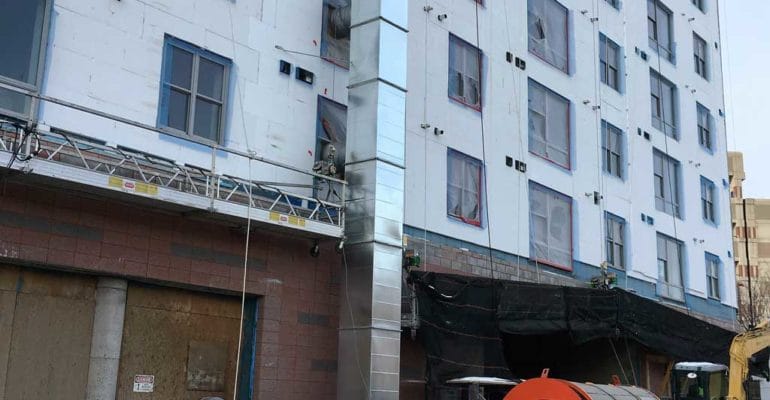Why Some Heaters Won’t Work with Ductwork
 Contractor Considerations
Contractor Considerations
Temporary heater rental fees can differ by a few hundred dollars. So, one might also think the differences between heaters, themselves, are equally as narrow. They’re not.
Contractors have much more to consider, including discharge temperature, cubic-feet-per-minute capacity, fuel efficiency, service and support, response time, and positive pressurization. Contractors that do a little heater homework will successfully supply hot air for their building. They also save money, which more than offsets the difference in rental costs.
In addition, contractors should make sure the temporary heater they choose can be used with ductwork.
Virtually every construction project uses ductwork to deliver hot air to different parts of a building. Sometimes ducts stretch a few feet between a heating unit and an opening on the first floor. Other times, ducts climb several stories of a high-rise. So, heating units must be powerful enough to force air through ductwork in a range of situations. But how do you know if a heater is powerful enough? Static pressure.

Static pressure (SP) is the resistance to airflow caused by air moving through a duct and is measured in inches water gauge (inWG) or inches water column (inch WC). To determine a heater’s ability to overcome SP, you will likely have to ask the heater’s manufacturer. Not all companies publish inch WC information.
Different blowers have different inch WC ratings. Inexpensive temporary heaters often use a “squirrel cage” blower, which may only be rated at 0.75” WC to 2” WC. These heaters are not powerful enough to be used with ductwork. As a result, they are frequently used as space heaters in open or well-ventilated areas. As covered in one of our recent blog posts, placing these heaters inside an enclosure raises concerns about carbon monoxide and moisture levels. Re-circulating heated air is not recommended.
In contrast, temporary heaters equipped with backward incline blowers are much more powerful. These units, often rated at 6” to 7” WC, can successfully force hot air through ductwork and into buildings.
Because they are more powerful, these heaters are usually placed outside a building. Drawing clean, fresh air also reduces concerns associated with re-circulating heaters.
So, before you rent your temporary heater this winter, make sure you find out what it is capable of. Will it only be able to heat a small space? Or will it be powerful enough to be used with ductwork and heat an entire building?




